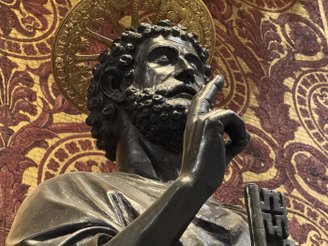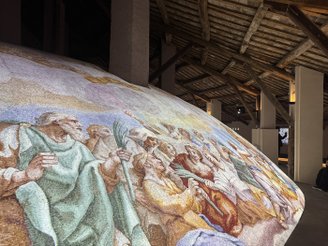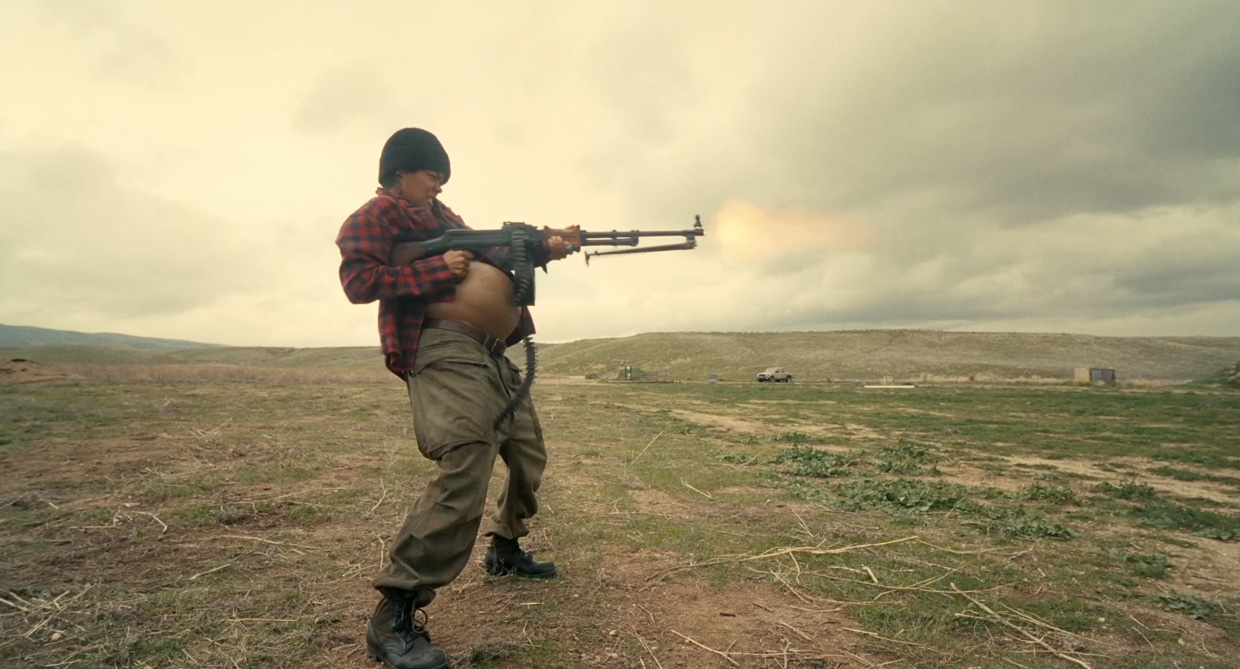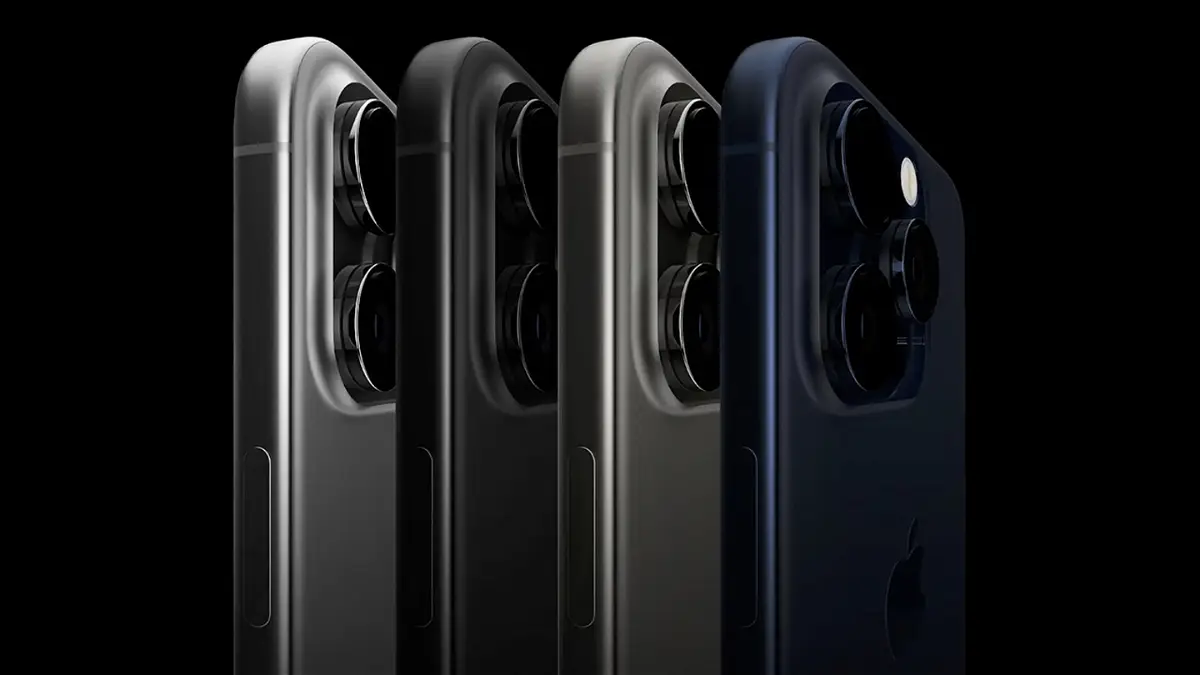The partnership between Microsoft and the Vatican will allow people from all over the world to enjoy an immersive experience in St. Peter’s Basilica using their mobile phones and computers. The project, announced this Monday (11), provides an interactive digital twin of the space accessible via browser.
Both Microsoft and the Vatican describe the project La Basilica Di San Pietro: AI-Enhanced Experience as something revolutionary and historical. They say the project focuses on preserving the historical-cultural and memory of the Basilica for future generations, but they also cite the general relevance of combining “art, spirituality and technology”. Microsoft vice president Brad Smith says it’s “a powerful example of how innovation can connect people to history.”
Another highlight of the new project is its educational impact for educators, historians and students. Considering the essence of the digital twin, which recreates a physical space in the virtual world, the proposal is to make the visit more accessible to people who do not have the opportunity to visit the Vatican.
The website hosting the digital twin takes a deeper look at the sacred, allowing you to explore areas not normally open to the public or never seen before, offering access to history, architecture, art and more, as well as its significance. area .
The project is another amazing computational demonstration by Microsoft and its Artificial Intelligence (AI) systems. Microsoft’s design lead, Shawn Wright, emphasizes that the model works in real time, and even from a video game perspective, the result is a bit surprising.
A realistic recreation of St. Peter’s Basilica
One of the highlights of the digital twin of St. Peter’s Basilica is the precision in detail. The project, in which Iconem, Dadada and Trifilm companies also took part, More than 22 petabytes of data processed on a set of more than 400 thousand imagesIt is based on photometry techniques. Microsoft AI For Good was responsible for processing and refining all this data. “This was one of the largest projects of its kind,” says Microsoft vice president Brad Smith.

Generative artificial intelligence techniques were also used to create realistic 3D representations of the structure of the space. Attention to detail can also help detect objects accurately and even find signs of possible damage or deterioration in physical structure. For example, It was possible to identify areas where small parts of some frames were missingsomething that doesn’t compromise long-distance imaging.
The images used to recreate the Basilica in the virtual world were shot by the Iconem team over three weeks with cameras, lasers and drones.. The project also accurately recreated the details of existing mosaics and fragments and preserved the true scale of the objects.
Photorealistic design is as impressive as the physical space. The use of generative AI made it possible to create “Gaussian Alerts” that represent points in those images. When putting them together, the Microsoft model adjusts the locations so that everything matches the real world, with dimensions and orientations. This way the structure is represented more faithfully in terms of build quality, including depth of field.
In this way, it is possible to see both the exterior and interior of the Basilica, while it is also possible to interact with the objects inside in real time. An example is Michelangelo’s Pietà, which can be seen in the virtual scenario. The marble sculpture is represented in the digital world in high quality, even recreating the “signature” created by the artist. In total, there are 42 direct points to navigate around the Basilica, including the Grottoes, St. Peter’s Pulpit and St. Peter’s Baldachin, the Dome, St. Peter’s Square and much more.
Wright explains that by capturing images it is even possible to fully visualize reflections and even different lighting effects. “There are so many hidden secrets,” and now “anyone can look up all these details from their mobile phone or computer and start doing it. [novas] questions,” he says.
Father Paolo Benanti, a Franciscan monk and professor of artificial intelligence ethics at the Pontifical Gregorian University in Rome, emphasizes in the project that knowledge is passed from one generation to the next “like signs, languages and things like that.” Regarding the project and its use of artificial intelligence, he notes that this new visualization interface is not a “replacement” for an in-person visit to the Basilica, but rather a new space where more people can learn about what is happening in the Vatican.
The father says anyone, from the faithful to priests, theologians, tourists and even those “who want to visit a work of art” in St. Peter’s Basilica, can access the content, even if it is digital. Benanti.
“And now that we have this model [de gêmeo digital]“There is a new way to examine the basilica,” he said, adding that it is now possible to use simple commands to examine and understand archived information, as well as find connections between pieces of space. before”.
“Pedro is here”: face-to-face interaction
In addition to the virtual experience, the Vatican has also prepared an immersive yet in-person experience based on the new project. “Pétros Ení”, meaning “Peter is here”, is the name of the exhibitions held in St. Peter’s Basilica.. It took its name from an inscription found during excavations in 1940 in an area believed to be the tomb of St. Peter.
Together with other press colleagues, I had early access to two exhibitions based on projections created by Dadada studio. The proposal is to combine all this historical context reflecting digital reconstructions of the basilica with the visual support provided by capturing hundreds of thousands of images; so much so that changes in location over the centuries are also digitally displayed.
In one of the exhibitions, it is possible to watch all these displays on large screens and at the same time interact with the pictures that provide explanations about the works. Moreover, in addition to highlighting the ancient inscriptions on the walls, they also design other equally relevant inscriptions. For example, you can hear content descriptions as you move from one place to another.

However, the octagons of St. Peter’s Basilica are still visited. This is a more private and specialized visit with access to 600 visitors per day. While walking between the octagons, we had the opportunity to visit the galleries and watch the projections with unprecedented details of the works, architecture, creation, as well as the piety of the place.
Again, these are areas that are not widely accessible to the public. However, the unity between physical space and technology allows for a more intimate interaction with the Basilica. On the other hand, it is also possible to access this experience through a digital twin.
*The journalist went to Rome, Italy, upon the invitation of Microsoft.
Source: Tec Mundo
I am a passionate and hardworking journalist with an eye for detail. I specialize in the field of news reporting, and have been writing for Gadget Onus, a renowned online news site, since 2019. As the author of their Hot News section, I’m proud to be at the forefront of today’s headlines and current affairs.











